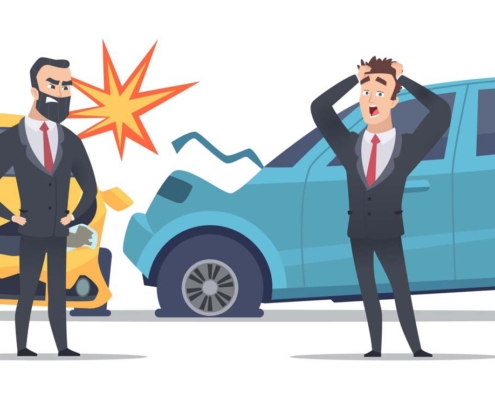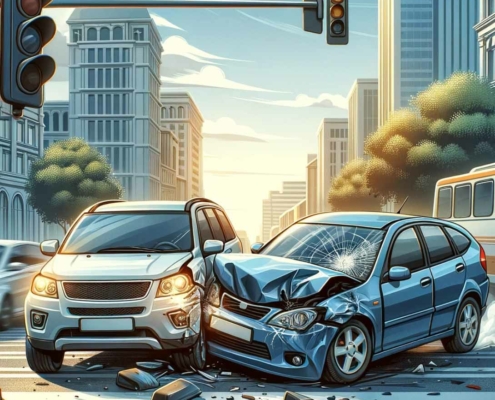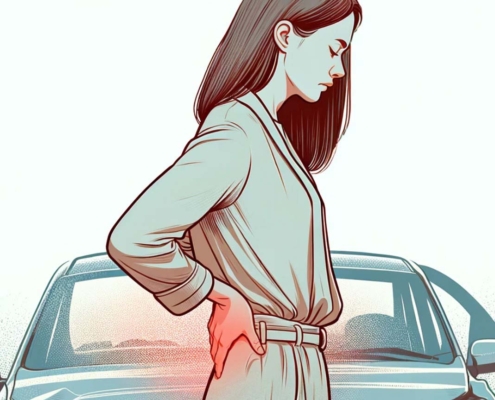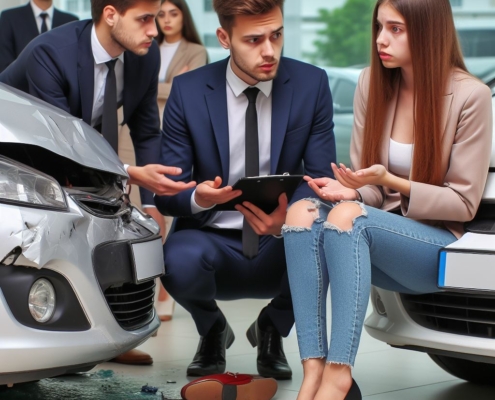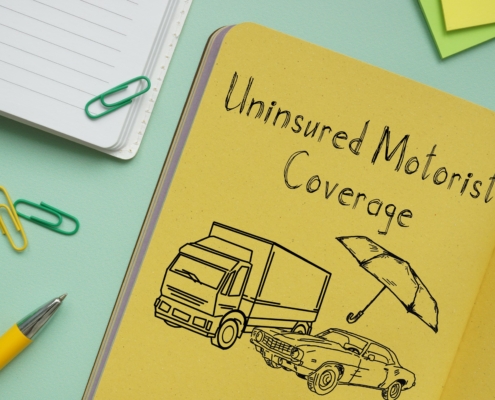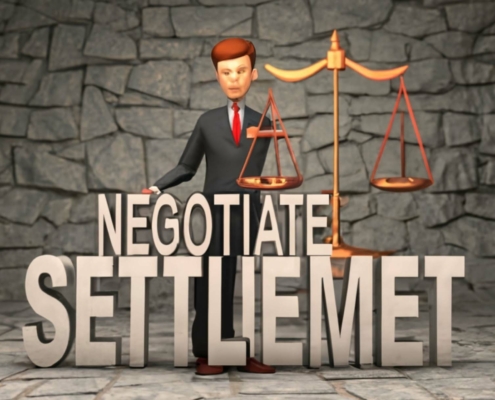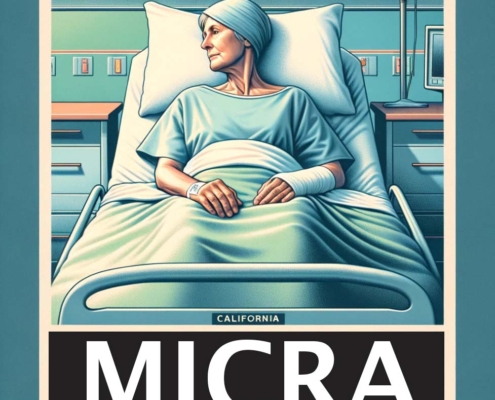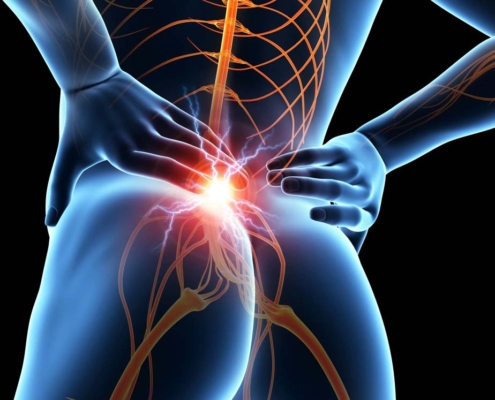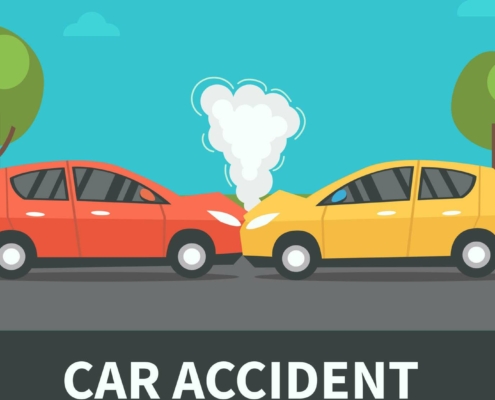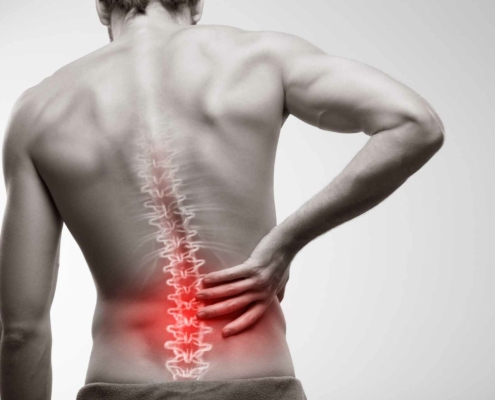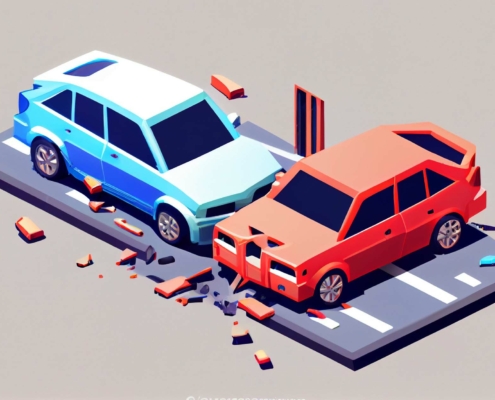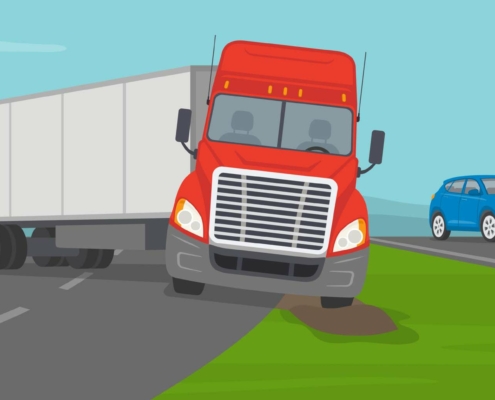What should you do after a car accident in California?
With a few exceptions, California’s fault-based auto insurance rules hold the at-fault motorist accountable for any losses that arise from their collision. After a collision, injured parties normally have two years to file a lawsuit or reach a settlement with their insurance company. Although purchasing additional coverage is advised, the minimum liability coverage requirements are $15,000 for each wounded person, $30,000 for each accident, and $5,000 for property damage.
In California, what you do following an automobile accident might affect your ability to receive compensation for pain and suffering, auto repairs, and medical expenses. Additionally, it can prevent you from breaking California law and getting your driver’s license revoked.
Your rights may be significantly impacted by the actions you take following an automobile accident in California, even if you were at fault.
If you are involved in a car accident in California, our car accident attorneys advise doing the following 15 steps.
-
Stay at the location of the car accident.
Ensure to move your car to a safe spot to do in an accident, preventing further hazards. If someone was hurt or killed, stay at the scene of the accident until the authorities arrive, unless you require emergency medical attention. Call emergency services right away if anyone is injured; it’s the first thing to do in an accident. Report the incident to the police, an essential thing to do in an accident if there are injuries.
If you flee the scene of an injury accident, you may be prosecuted with hit-and-run. A $10,000 fine and a year in jail are among the possible penalties (higher if someone dies or there is a major injury).
After identifying yourself to the persons involved in the collision and assuming that the only damage appears to be property damage, you are free to depart the site legally. Missing your identity is equivalent to a misdemeanor hit-and-run. Penalties may consist of a maximum $1,000 fine and/or a maximum 6-month prison sentence.
Get in touch with the police if the other driver or drivers left the scene. You can make a claim against their insurance company if the authorities are able to locate them. However, if the negligent driver is never located, you can still be eligible to get compensation from your own insurance provider. This is provided you have comprehensive and collision coverage, Med Pay, and/or uninsured or underinsured motorist coverage (UMC/UIM).
-
If necessary, seek medical attention.
Check for injuries among all parties, a vital action to do in an accident. Do not wait for the cops if you need medical attention right away because you were hurt.
Make a 911 call yourself or ask someone else to do so. If another person is driving you to the ER, please, if at all possible, leave your contact information with the other driver(s).
-
Go to an area that’s safe.
You are required to move your automobile to the shoulder or another safe location if it is safe to do so. You or others may sustain additional injuries as a result of cars that are obstructing traffic.
However, if relocating the cars will put you in danger, leave them where they are.
In addition, unless the cars pose a substantial risk, you should leave the cars where they are and wait for police authorities if someone is killed or gravely injured.
-
Take notes regarding the other car.
Document the scene with photos of all vehicles involved, crucial to do in an accident. After you’ve moved the cars (if necessary) and/or gotten the injured people medical assistance, record or take a picture of:
- The numbers on the license plates of each additional car involved in the collision
- The other vehicle(s)’ year, make, model, and color
- Also, if at all feasible, provide the other vehicle(s)’ Vehicle Identification Number (VIN).
To lawfully report the collision to the California DMV, you will need this information. A driver’s license, insurance card, and registration typically list the VIN. However, it is a good idea to get a physical confirmation, particularly if the driver lacks insurance.
However, if the other motorist refuses to cooperate, do not try to obtain the VIN number from their car. It’s not a good idea to touch someone else’s car without their permission.
On a car, the VIN can be located:
- Both inside the driver’s side door (where the door latches when closed) and on the driver’s side dashboard (where it meets the windshield).
- The VIN is often located on the left side of the steering head of a motorcycle.
-
Trade contact details with witnesses and other drivers
Exchange insurance information with the other driver, a necessary step to do in an accident. Request to see the other person’s registration, insurance details, and driver’s license. Take a picture of these documents if you can. If not, record the numbers in writing.
If at all possible, you should also obtain the contact details of any additional parties who witnessed or participated in the accident. If a law enforcement official arrives on the scene, make sure to note the officer’s name as well.
Regardless of who was at fault, make sure the other driver has your information.
Keep in mind that you have to show this information to the police if they ask: your registration, insurance, and driver’s license. If not, you might be fined.
-
Do not accept blame.
Do not admit fault at the scene, a wise thing to do in an accident. Even if you believe you were at blame for the accident, it is crucial that you avoid making any admissions of guilt. You might be in error. Or perhaps there’s some fault on the other driver’s part. Alternatively, the issue might be:
- Negligent highway construction
- Poor road design
- Carelessness on the part of automakers or maintenance providers
Even expressing regret may be misinterpreted and prevent you from receiving the necessary compensatory damages from your insurance provider or the other driver’s insurance provider.
But do be sure to find out whether the other driver is hurt or requires medical attention. Kindly request that the other driver contact your insurance provider if they try to get you to take responsibility for the collision.
Comparative negligence
Due to the state of California’s “shared fault / pure comparative negligence” legislation, you may be entitled to compensation for your portion of the blame in an automobile accident. Your allocation of fault would just lessen your damages.
For instance, you would get 75% of your damages if the court determined that you were 25% to blame for the vehicle accident (for example, by failing to use a seat belt). As a result, the court would grant you $7,500 ($10,000 minus 25%) if you had lost $10,000.
-
Don’t pretend you’re not hurt.
Seek medical attention even for minor injuries, an important thing to do in an accident. Do not admit to the other motorist that you were not hurt in the vehicle accident, even if you believe so.
Soft-tissue injuries don’t always show up right away. Claiming not to be injured provides the other driver’s insurance provider with a justification to reject your claim or make a lowball offer.
It does not imply that you ought to tell lies. Lying has the potential to damage your reputation. Saying you don’t know and that you’ll get help if needed is perfectly acceptable.
-
If the other car or property is not occupied, leave your contact information.
One of two things is required by California law if you hit an unoccupied vehicle or other property:
- Find the owner and give them your registration and driver’s license
OR
- When something happens, leave a written note with your name and address in a noticeable spot on the car or property and let someone know right away.
A note is required by law to include the circumstances. It should, however, state as little as possible, such as that your car struck the owner’s property in an accident.
-
Photograph the location of the accident
Take pictures of the accident scene and the vehicles involved, if it’s safe to do so, so your lawyer or adjuster can better understand what happened. Make an effort to take pictures of all the damage to the car and any injuries.
It can also stop someone from arguing that you should pay for any future damage the car or property may experience.
If there is a safe area to take pictures, return as soon as you can if it is not safe to take pictures at the accident scene or if you have to leave to get medical attention. Photos can even be helpful later on in helping your insurance adjuster or California injury lawyer understand what transpired.
-
As soon as possible, document your account of the incident.
Write down whatever you can remember about the accident as soon as it’s practical, regardless of how trivial you believe it is. The sooner you document your impressions following the accident, the better, as details may gradually disappear with the shock.
Items to jot down or document comprise (but are not restricted to):
- The accident’s time and date
- The intersections of streets and the paths taken by every car
- Using your best judgment, gauge each driver’s speed
- The color of any discernible traffic lights, as well as any unfavorable road circumstances (such as potholes or inclement weather)
Collect witness statements if available, a helpful thing to do in an accident.
-
Keep a record of your injuries
Use your phone or camera to take pictures of any apparent injuries, or have someone else do it for you.
Ask a nurse or other medical expert to take pictures of your wounds if you go to the doctor.
Write down or record your personal perceptions of what is damaged or hurts as quickly as you can.
Your chances of receiving the compensation you are entitled to from your personal injury lawyer are stronger the more documentation there is of your injuries.
Injuries sustained in auto accidents can range from mild and cosmetic to severe and permanent. Typical instances consist of:
- Fractures, or shattered bones
- Severe brain injuries, broken backs, or necks, as well as spinal cord injuries
- Bruising, cuts, and tears (soft tissue injuries)
- Burns that leave scars and deformities
Not to be overlooked is the emotional discomfort that accidents can induce, which can result in serious mental and psychological harm, including PTSD.
-
File an accident report
According to California law, you must report an accident to the California Department of Motor Vehicles within ten days if:
- A person was killed, someone was hurt (even if they were only slightly hurt), or the accident caused more than $1,000 worth of damage.
- Make the accident report even if you are unsure, especially if you want to file a claim with your California vehicle insurance.
Accidents must be reported using California DMV Form SR1 to the DMV. The following details are required from you:
- The information below pertains to you and the other drivers involved in the accident: your name, address, date of birth, and driver’s license details; your insurance information (policy number, expiration date, and insurance company); and the specifics of the collision, such as the date, time, location, injuries, and damages.
Your driver’s license may be suspended for up to a year if you neglect to notify the DMV of an accident. It should be noted that in the event that there are injuries or fatalities from the collision, you have 24 hours to file a written crash report with the California Highway Patrol or the local police if authorities do not show up at the scene.
-
If it is appropriate to do so, choose not to report the accident.
If no other drivers were involved and the damage to your automobile was minimal enough that you could live with it or afford to pay for repairs out of pocket, then there is just one situation in which it makes sense to not report an accident.
For example, let’s say you scraped or backed into a wall, damaging your car. You don’t have collision insurance, or if you have, the cost of repairs will come out to about your deductible or an amount you can comfortably afford. Car accident victims in such situations have the option of keeping their vehicle “as is” or covering the cost of the repairs themselves.
-
Let your insurance provider know
Notify your insurance company as soon as possible, a required thing to do in an accident. In California, a lot of people choose not to report auto accidents for fear of having their premiums increased. Only two states have laws that forbid vehicle insurers from boosting premiums when the policyholder is not at fault for an accident: California and Nevada.
Moreover, in order to have a strong insurance claim, most auto insurance policies mandate that drivers report an accident as soon as possible.
Reporting an accident is usually the wisest course of action, even if it was your fault. Even if the driver claims they won’t, the other person might report it, placing you in danger of a canceled auto insurance policy and a suspended driver’s license.
In the event of an automobile accident, early reporting also improves your insurer’s ability to refute your injury claim.
Due to blame-based auto insurance legislation in California, accident victims would make claims with the insurance of the driver who was at fault.
Requirements for insurance
Keep in mind that all Californian drivers are required to carry at least:
- $5,000 in property damage liability, $15,000 in bodily injury coverage per person, and $30,000 in bodily injury coverage per accident.
Driving while uninsured is against the law. A first-time offender is subject to:
- $100 to $200 in fines
- License suspension
- Car impoundment
Every time you are in an accident, when you renew your registration, or when a police officer requests to see your proof of insurance (such during a traffic check), you have to show it.
-
Consider hiring a personal injury attorney in California.
In California, you typically have a two-year statute of limitations following a car accident before you may file a personal injury claim. The statute of limitations is three years from the date of the accident if there is just property damage.
It is advised that you consult with a skilled California car accident attorney as soon as possible to help safeguard your legal rights and assess all available information, including the police report, in order to check whether you are entitled to compensation.
If you are unable to pay for your medical care, a skilled attorney may also be able to assist you in finding a California physician who will take a medical lien. Furthermore, your attorney can write an insurance demand letter that could result in a settlement offer that pays for your losses. Lastly, a skilled California injury attorney is knowledgeable about insurance regulations and is adept at deceiving insurance companies. Dealing with both your own and the other person’s adjuster(s) might be a headache that your lawyer can spare you.
Potential financial losses
To compensate you for all of the losses you suffered in the vehicle accident, your personal injury lawyer will argue for compensatory damages. There are two categories of compensatory damages: “economic” and “non-economic.”
It is simple to compute economic damages when you have verifiable documentation, such as invoices, bills, body shop estimates, etc. Among the economic damages are:
- Current medical bills as well as anticipated medical costs
- Accommodation for disabilities
- Lost profits and chances for work and business, both current and prospective; and Property damage, which includes fixing or replacing the car.
Non-economic damages are injuries that cannot be measured in monetary terms and are more challenging to assess. Among the subjective losses they comprise are:
- Suffering
- Mental distress
- Diminished quality of life
- Embarrassment
- Inconvenience
- Loss of consortium
- Damage to one’s reputation
Keep in mind that non-economic losses are not recoverable if you fail to meet California’s criteria for financial responsibility (such as failing to carry insurance). The same goes for if you are found guilty of driving while intoxicated or under the influence of drugs (DUI).
Punitive damages, as opposed to compensatory damages, are intended to hold the offender accountable for their actions. You may request punitive damages from the court if your case is successful at trial and you can demonstrate that the defendant was cruel, malicious, or deceptive.
If a loved one perished in an automobile accident, the victim’s family or estate might be entitled to compensation for funeral costs and lost support.


